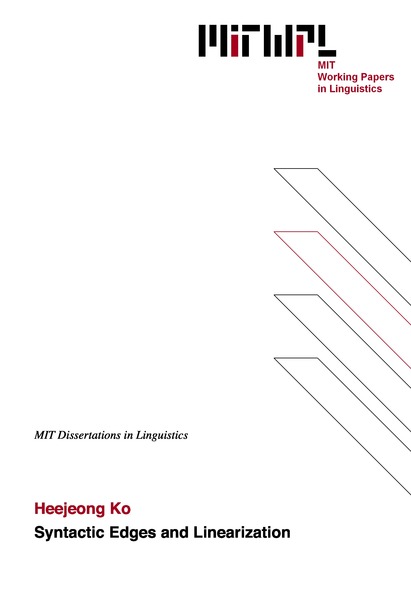Syntactic Edges and Linearization
H. Ko, 2005


Save $9.95 (24%) if bought together with The Syntactic and Semantic Roots of Floating Quantification


Save $14.95 (29%) if bought together with A Few from Building E39: Papers in Syntax, Semantics and Their Interface
In this thesis, I investigate the question of how the units of a linguistic expression are linearly ordered in syntax. In particular, I examine interactions between locality conditions on movement and the mapping between syntax and phonology. I show that Cyclic Linearization of syntactic structure and constraints on domain-internal movement of multiple specifiers predict unique ordering restrictions at the edges of syntactic domains. As a consequence of cyclic Spell-out and conditions on syntactic agreement, elements externally merged as a constituent at the edge of a Spell-out domain cannot be separated by a domain-internal element. This proposal provides a unified account of a variety of types of ordering restrictions in scrambling, in particular, floating quantifier and possessor constructions in Korean and Japanese. Evidence is drawn from interactions among various factors, which include: scrambling, the scope and syntactic position of adverbs, depictive and resultative predicates, possessor constructions, and varieties of floating quantifiers, among others. It is argued that the domain of cyclic Spell-out must include the edge as well as the complement of a Spell-out domain. This challenges the view that edges are designated escape hatches in syntax. Other results include arguments that scrambling is feature-driven movement, support for the view that syntactic agreement is feature sharing, as well as a particular repertoire of phases (including VP as well as vP).



